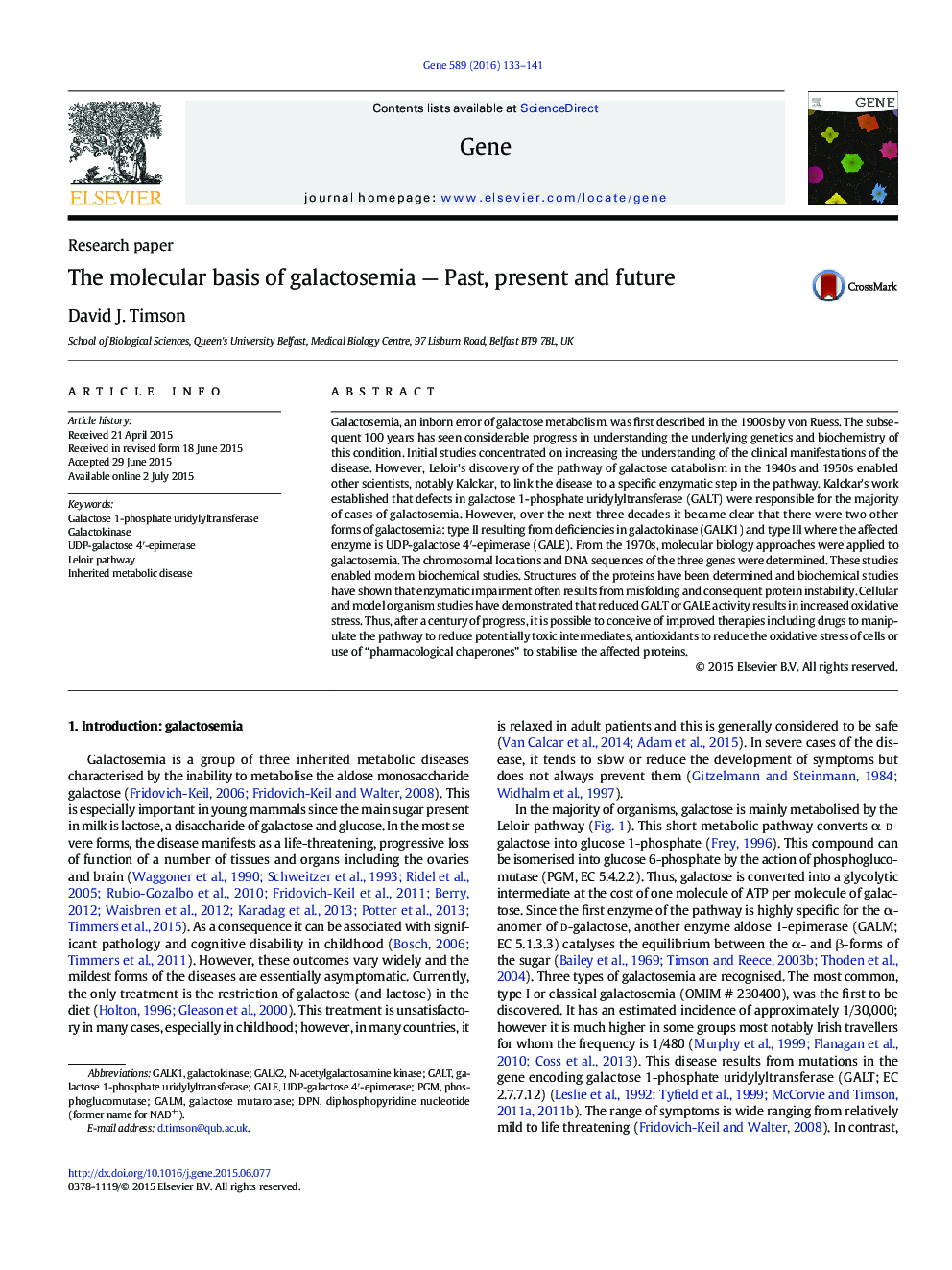| کد مقاله | کد نشریه | سال انتشار | مقاله انگلیسی | نسخه تمام متن |
|---|---|---|---|---|
| 5905117 | 1159835 | 2016 | 9 صفحه PDF | دانلود رایگان |

- Galactosemia was first described in 1908 by von Ruess.
- Leloir discovered the pathway of galactose catabolism.
- Kalckar determined that GALT deficiency is the cause of classic galactosemia.
- Two other forms exist: GALK1 and GALE deficiency.
- Modern molecular approaches are suggesting ways to improve treatment.
Galactosemia, an inborn error of galactose metabolism, was first described in the 1900s by von Ruess. The subsequent 100Â years has seen considerable progress in understanding the underlying genetics and biochemistry of this condition. Initial studies concentrated on increasing the understanding of the clinical manifestations of the disease. However, Leloir's discovery of the pathway of galactose catabolism in the 1940s and 1950s enabled other scientists, notably Kalckar, to link the disease to a specific enzymatic step in the pathway. Kalckar's work established that defects in galactose 1-phosphate uridylyltransferase (GALT) were responsible for the majority of cases of galactosemia. However, over the next three decades it became clear that there were two other forms of galactosemia: type II resulting from deficiencies in galactokinase (GALK1) and type III where the affected enzyme is UDP-galactose 4â²-epimerase (GALE). From the 1970s, molecular biology approaches were applied to galactosemia. The chromosomal locations and DNA sequences of the three genes were determined. These studies enabled modern biochemical studies. Structures of the proteins have been determined and biochemical studies have shown that enzymatic impairment often results from misfolding and consequent protein instability. Cellular and model organism studies have demonstrated that reduced GALT or GALE activity results in increased oxidative stress. Thus, after a century of progress, it is possible to conceive of improved therapies including drugs to manipulate the pathway to reduce potentially toxic intermediates, antioxidants to reduce the oxidative stress of cells or use of “pharmacological chaperones” to stabilise the affected proteins.
155
Journal: Gene - Volume 589, Issue 2, 10 September 2016, Pages 133-141